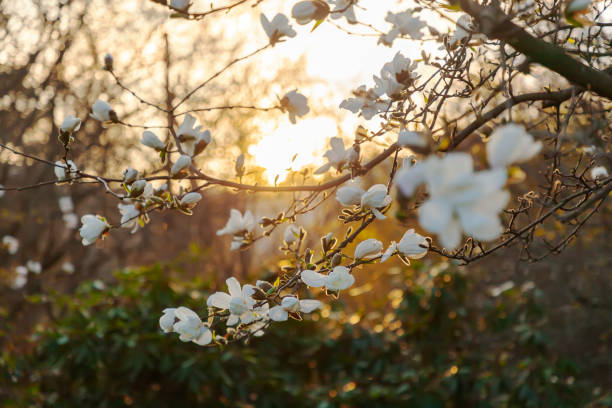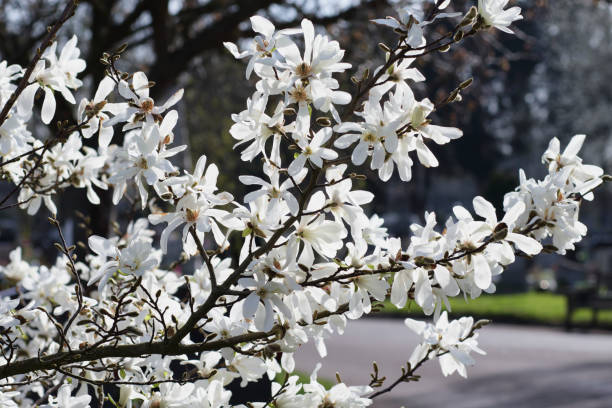Do Deer Eat Magnolia Trees? – How to Protect Your Home from Damage by a Deer
Yes, sadly, magnolia trees are a favorite of deer. If you live near a forest in an area with acres of healthy grass and trees, likely, deer will also live in the area, posing a threat to your Magnolia trees. If you live near an area with acres of healthy grass and trees, it is unlikely that Deer will inhabit the space.
Table of Contents
Preventing Deer Damage to Magnolia Trees
Take the trial and error method if you want to keep Deer out of your garden and away from your Magnolia tree. Furthermore, whatever works for the magnolia will most likely deter them from attacking your other plants. Deer are herbivores, and they are well-known for devouring almost any tree or shrub that they can get their hands on. The bark of young trees, which is tender and easy to chew, is particularly appealing. In this way, they may threaten newly planted magnolia trees.
They may not consume the tree in its entirety, but they will undoubtedly consume enough nibbles to cause damage to the tree and negatively impact its health of the tree. Having said that, if you live in an open area and have a young magnolia tree, you must take precautions to keep Deer away from it. But, exactly, how do you go about doing this? Moreover, how can you tell if Deer are to blame for the damage to your magnolia trees? Let’s talk about it.

How to Recognize Deer Activity
Deer are constantly on the lookout for new food sources. They have been observed to consume food at all-day hours, including the early morning, evening, and overnight hours. It may be hard to detect them when invading your garden unless you follow a strict schedule. If you suspect deer activity in the vicinity of your magnolia trees, there are a few signs to look for to confirm your suspicion.
The Prints of Deer Hooves
The shape of a deer’s hoofprint closely resembles that of an upside-down heart. You may not see the entire print, but instead deep oval-shaped holes near your tree.
Deer Poop
A sign of deer activity may be seen in or around the entrances to your garden and backyard if you begin to notice multiple small piles of pebble-like droppings in or around the entrances.
Trampled Plants and Flowers
Notice any parts of your garden that look like they’ve been trashed? It could be a sign that there are Deer in the area and going around your garden.
Defoliated Bushes
In contrast to other garden pests like rabbits and squirrels, Deer lacks incisor teeth. As a result, when they eat tree leaves, they take a quick pull and tear the leaf apart quickly. You may have Deer on your property if the leaves of your magnolia trees appear torn rather than nibbling.

How Do You Keep Deer Away From Your New Trees?
You can use various methods to keep Deer away from your magnolia trees and other trees in your yard or garden.
Try a Variety of Commercial and Homemade Repellents To See Which Works Best
Fabric softener strips are a common deer repellent. To keep Deer away from your garden, try hanging the strips from nearby trees. Ammonia, garlic, or vinegar-soaked cloths, red pepper flakes, and cayenne pepper are other common homemade repellents. Try out a few different options to find the most effective repellent for your garden. It’s important to avoid using poisonous repellents because they can be deadly to local wildlife.
Never Plant Anything That They Like To Eat
Deer are at their hungriest during the spring months of the year. Because they need to replenish the weight they lost over the winter, the young fawns are so hungry and will go to any lengths to find something that will satisfy their hunger.
This category includes plants that are high in protein and water content, such as lettuce and peas. Some common plants that deer prefer all-year-round should be avoided when planting magnolias. Roses, clematis, berries, and chrysanthemum are all included. A deer will likely try to eat a plant if it is soft and smooth.
Plant Perennials with Strong Scents
Set up a deer-repelling border around your garden by planting a row of plants around the perimeter. When it’s time to eat, deer rely heavily on their sense of smell. The smell of your magnolia tree can be disguised if you have any plants or herbs that are intense or strongly scented. Sweet-smelling plants and shrubs can attract a wide variety of wildlife, including Deer, so avoid them if you can.
Plant Prickly Bushes and Trees
When feeding, deer also rely on their tactile senses. Therefore, make your magnolia tree’s surroundings as unpleasant as possible for Deer. You can do this by using plants with prickly thorns and sticky or fuzzy foliage to create a bit of texture around your garden’s perimeter and entrance.
Minimize Food Supply
Clean up the area around your magnolia tree and your garden as much as you possibly can. Cutting down any trees that could hide Deer from predators, harvesting fruits when they are ripe, and disposing of any fallen or rotten crops are some of the measures that can be taken to keep Deer safe.
Make Some Noise
As a result, deer are extremely sensitive to loud or sudden noises, making them particularly vulnerable to predators. Decorate your magnolia tree with wind chimes or other noise-making items to keep pests away.
Create Levels All Around Your Tree
Climbing is something deer avoid at all costs. Consider adding some terrain to the area where your magnolia tree stands. Around our tree, we might do things like pile up mulch or build a sunken bed or terrace.
Make Use of Scare Tactics
Use scare tactics like fake predatory animals, scarecrows, and other moving garden ornaments to Deter Deer from your magnolia tree.
Light Them Up
If at all possible, install motion-activated perimeter lights around your tree or garden to scare curious Deer away as they approach your property’s entrance. You may want to employ them in addition to the more traditional methods of frightening people.
Put a Fence Around Your Tree
A sturdy fence is one of the easiest and most effective ways to protect your magnolia from Deer. If you live near a Whitetail deer population (they’re good jumpers), build a fence at least eight feet high. Otherwise, a 6-foot fence should do. Consider an electric fence if large Deer are a problem in your area. Electric fences do not permanently harm Deer but give them a mild shock similar to static stock.
It’s Time To Let the Dog Loose!
Your garden’s best friend will be your canine companion if you have a garden that is outside. When it comes to keeping Deer away, dogs are one of nature’s most effective deterrents. Deer can be deterred by letting your dog roam around the perimeter of your garden at least once a week.
Install Automatic Sprinklers
Use a sprinkler with a motion sensor. Because of the sound and the water, they’ll most likely flee back into the forest.
